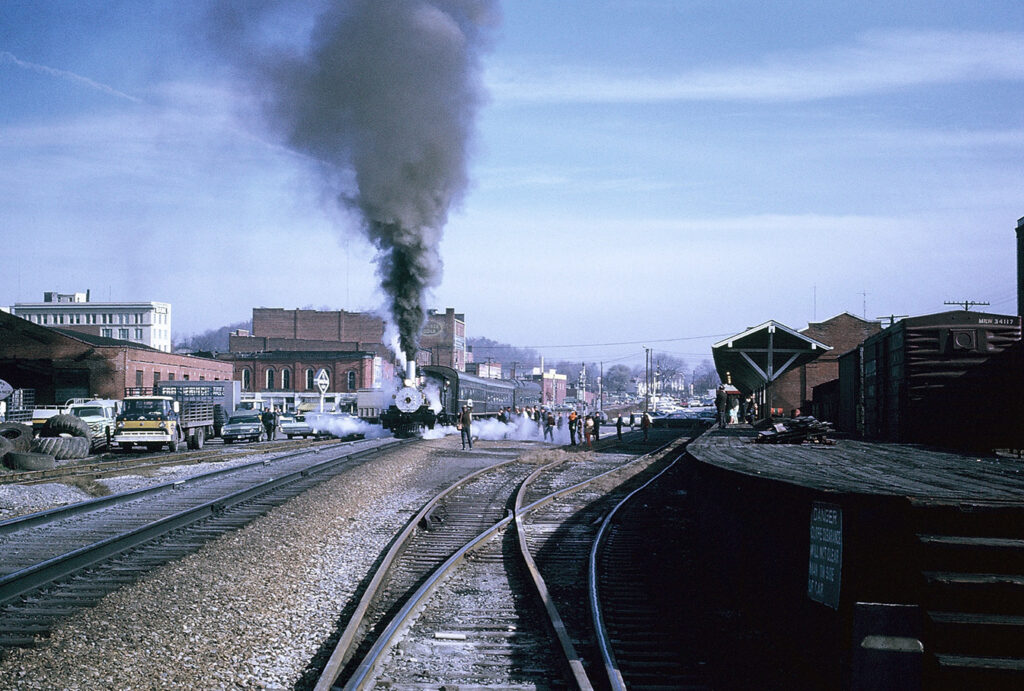
By Robert Sorrell
A restaurant and local tourism offices are now housed in the restored former Carolina, Clinchfield & Ohio Railroad Station and Depot in downtown Johnson City.
Located at the corner of Buffalo Street and State of Franklin Road, the property consists of a two-story passenger station and a one-story freight house and depot.
The city of Johnson City purchased the two-story section in 2021. It now houses the offices of Visit Johnson City. A new visitors center is expected to open on the first level of the old passenger station this fall. The BURG’r & BARRELL restaurant opened in 2022. It replaced the former Tupelo Honey restaurant.
Visit Johnson City, the city of Johnson City and owners of the BURG’r & BARREL “have brought new life to the old Carolina, Clinchfield & Ohio Depot, which was originally completed in 1908,” said Alec Castro, director of sales and public relations for Visit Johnson City.
Known locally as the Clinchfield, the 277-mile-long CC&O Railroad served five states, including Kentucky, Virginia, Tennessee, North Carolina and South Carolina.
“The successful construction of the Clinchfield Railroad through the mountains of Kentucky and Tennessee and beyond was nothing less than an engineering marvel,” said Mark Stevens, co-author of “The One & Only: A Pictorial History of the Clinchfield No. 1” and “The Clinchfield No. 1: Tennessee’s Legendary Steam Engine.”
Stevens, who wrote the books with A.J. “Alf” Peoples, said, “Many had tried and failed, but when George L. Carter succeeded, he really changed the economy and history of Northeast Tennessee.”
The Clinchfield, which was developed by Carter, was a “catalyst to the success” of Kingsport and Johnson City, Stevens said. By placing the railroad’s headquarters in Erwin, it also put a “much-needed shot in the arm” for Unicoi County, he added.
“I don’t think that it’s too much to say that the Clinchfield Railroad would have been an economic force for parts of Tennessee, Kentucky and the Carolinas never before seen or imagined,” Stevens said. “It would be on par today of how major companies like Apple and Microsoft changed the world. The Clinchfield changed the world for parts of Appalachia. It was that big, that important.”
The depot in Johnson City served as a major center of passenger and freight traffic. It was in use as a passenger station until 1955, and it was used as a yard office and communications facility until the 1970s.
Originally, the northeast façade was designated as the white ladies’ entrance to the white passenger waiting room. According to Clinchfield historian James Goforth, this was to protect the women, often with young children, from some of the more unsavory characters that might be encountered on the rail, according to the National Register of Historic Places, which added the depot in 2008.
At one point, the Clinchfield had a hopper that allowed the standard gauge Clinchfield coal cars to transfer coal into the East Tennessee & Western North Carolina narrow gauge rail line cars.
ET&WNC cars sat on tracks near the depot until 2004. All tracks connecting the station with other rail lines were removed in 2007. The remaining track that runs near the front of the station connects the ET&WNC with the Norfolk Southern mainline, which continues to operate through the city, according to the historic register.



